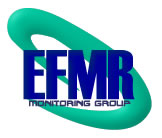From The Nation:
For about a decade now, nuclear boosters have been telling us that a “nuclear renaissance” is underway thanks to the advent of cheaper, safer and faster-built “third-” and “fourth-generation” reactors. Their ranks have been swelled lately by green champions of nuclear power like George Monbiot, who has recently embraced nuclear energy as an alternative to fossil fuels in the quest to mitigate climate change. Anti-nuke activists like Helen Caldicott have responded with dire warnings of nuclear apocalypse and radiation-induced cancer (see their exchange on a recent episode of Democracy Now!).
But for all its moral urgency, this debate usually ignores the economics of nuclear power. It is economic factors like costs, supply chains, financing and profitability that will determine our future energy mix. And so far, the dollars and cents calculations for nuclear power just do not add up.
The argument for nukes gets even weaker when one considers the compressed time frame of climate change: carbon emissions must drop sooner and faster than the long, slow, costly process of building new nuclear plants would allow. The boosters of nuclear power, including greens like Monbiot, seem to forget the reactors don’t build themselves. They are built and operated by specific institutions under concrete economic circumstances like the price of capital, special metals, insurance and the availability of skilled labor. Once the economic arguments get to that level of specificity, the viability of atomic power falls apart.

No comments:
Post a Comment